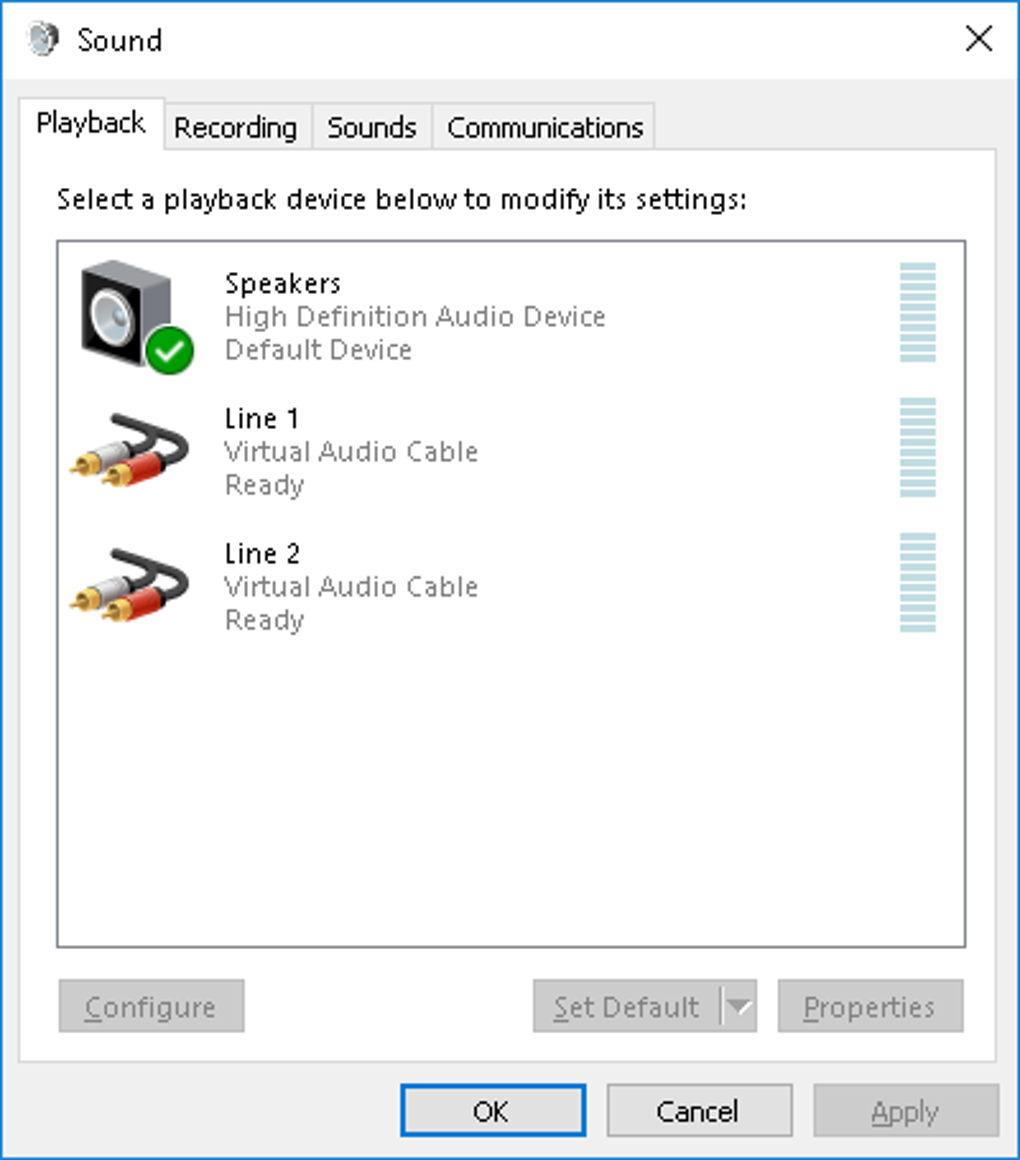

#VIRTUAL AUDIO SOUND DRIVER INSTALL#
You may want to download and install new audio drivers first before looking for it, sometimes that helps. You can check if yours already does by following instructions here:
#VIRTUAL AUDIO SOUND DRIVER WINDOWS#
With Windows Vista/7, for some reason many sound card drivers do not include this as an option. Programs just select your soundcard's name). Now with for example VLC choose "Open Capture Device" -> Audio Device Name -> select "your soundcard's name" (other Now click the "select" checkbox underneath "Wave Out Mix" Run sndvol32 (Start menu -> Accessories -> Volume/Audio), choose options -> properties -> recording radio button, click ok, If you want a smaller download you can just download the file source_code\Release\audio_sniffer.ax then run regsvr32 audio_sniffer.ax on it as an admin user, or use the "just device" distro.īasically, with windows XP, you can typically already "record what you hear" Or playing, as apparently it captures it at "normal volume" regardless of how high your speaker output is.Īny feedback welcome, including feature requests like "support more audio channels than 2". If this doesn't work for you then ping me I maybe could add a more "realtime" option orīasically any feedback welcome, if it doesn't work.Īlso note that if you turn down your system volume within windows, it will still continue recording If you use it in VLC you'll need a directshow cache of at least 40ms, for whatever reason.Īlso note that it's tuned set to work best for recording "what you hear" If that also doesn't work then you could use a small audio cable to connect your input jack with your output jack,Īnd then record using that.

If it doesn't work well for you (of course please report this fact), then you may be able to turn on "record what you hear"/"wave out mix" for your system, So it would seem the problem is really with the Realtek Driver. If I make the "PlayOn Virtual Audio Device" or the "Virtual Audio Cable" the Playback Default device instead of the Realtek speakers all the problems with your filter go away. "I was able to reduce the VLC delay messages by changing the output frame rate from 30 to 24 and increasing the dshow buffer from 200 to 20000" (you shouldn't need to though). Or submit an idea/feature request to our uservoice: Īlso note that VLC directshow input might need buffers of at least 40 or 50 ms or it fails for some reason. = Troubleshooting/Contact/feature requests =īasically, if you have a problem/feature request (ex: recording multiple audio at the same time, adding ability to strip silence, etc.), or mailing list NB that you'll need java JRE previously installed to use the included helper apps. (also see if you want to stream your desktop with audio $ ffmpeg -f dshow -i audio="virtual-audio-capturer" yo.mp3 ", or use itĪs input to any other program that can take directshow devices as an input.Įxample: VLC media player: media -> open capture device -> select capture audio device "virtual-audio-capturer"Įxample: ffmpeg (to save audio to file yo.mp3 from what is currently playing): Then use it via its included start menu utilities "start menu/windows orb -> screen capturer ->. NB THAT IF YOU WANT TO USE WITH SCREEN RECORDING THEN PLEASE INSTALL Windows XP users please read the "history" sectionįor something else you can try in its place. record what you hear) for Windows 7/Vista. This is an audio capture device allowing you to capture all the "wave out sound" that is playing on your speakers


 0 kommentar(er)
0 kommentar(er)
